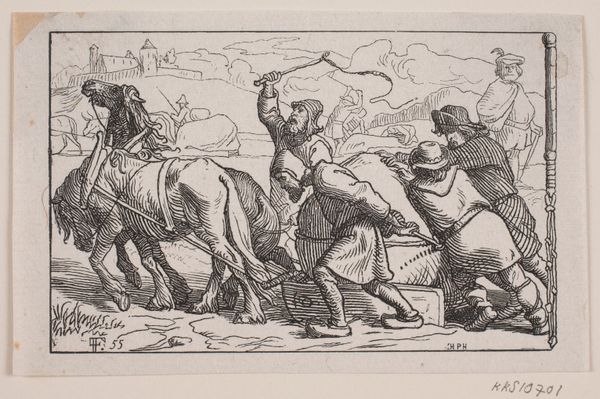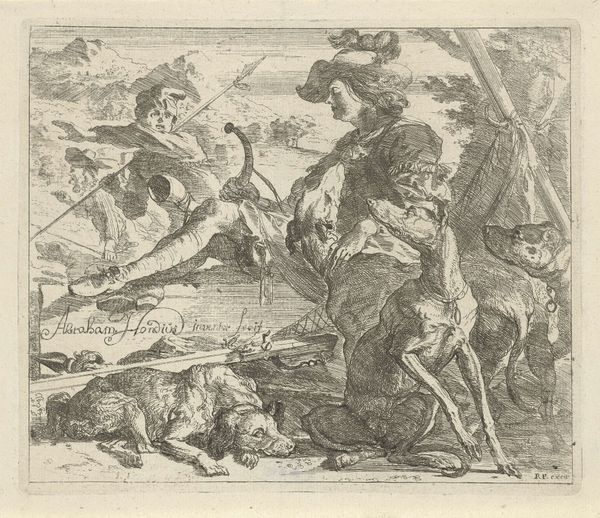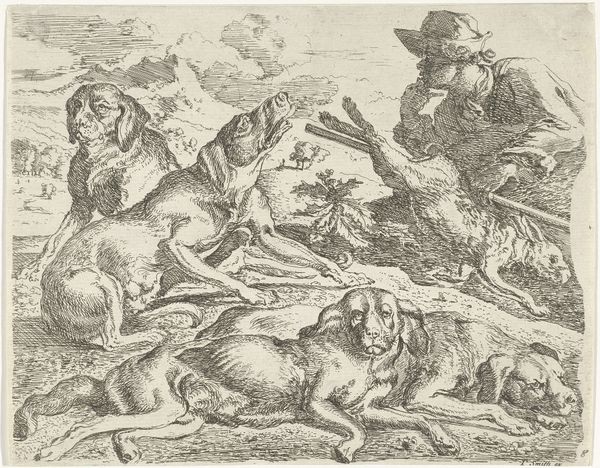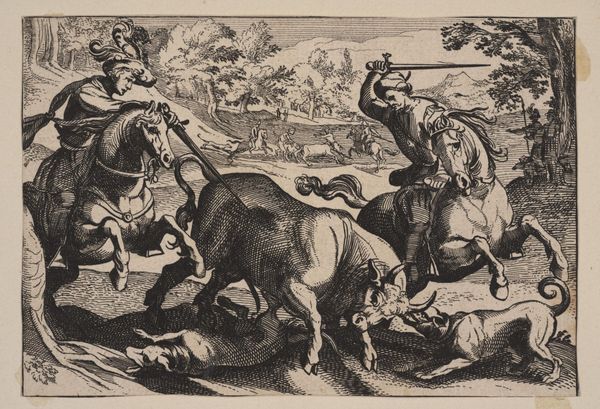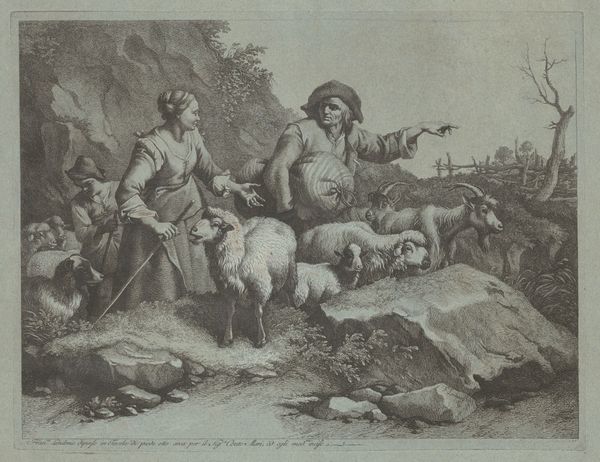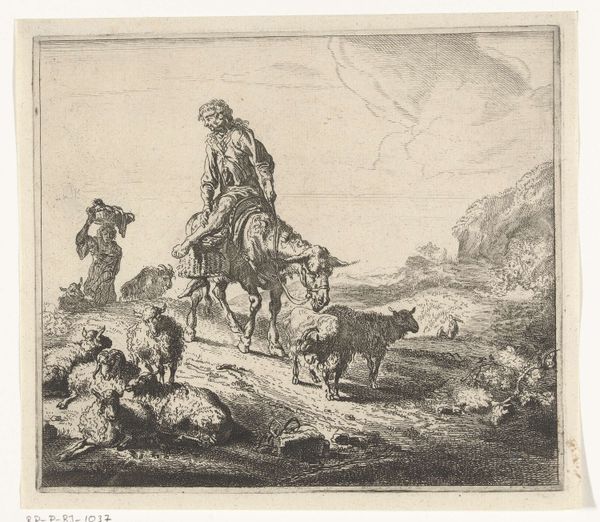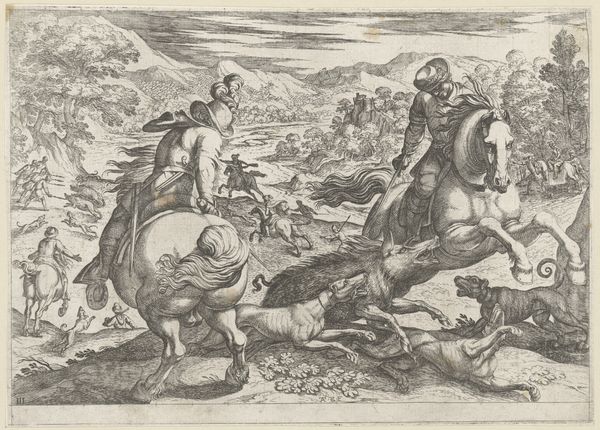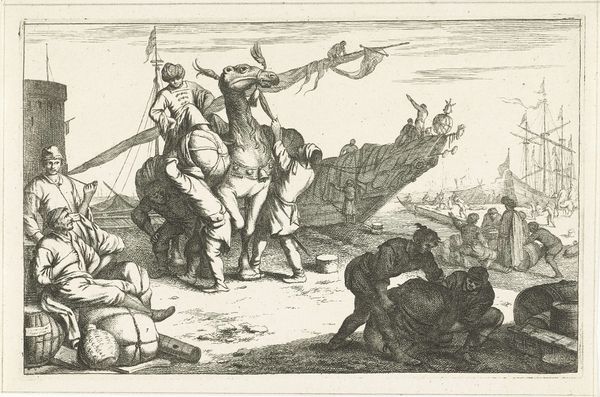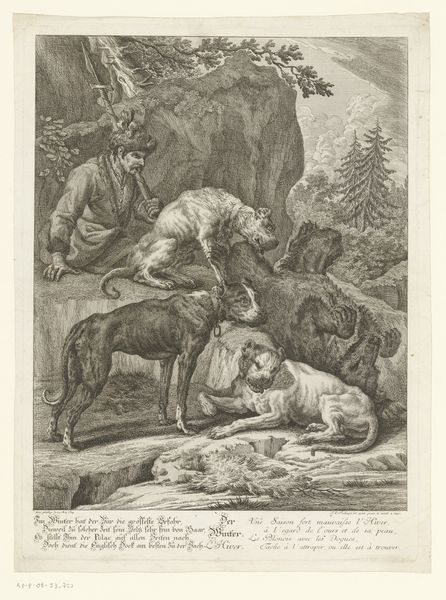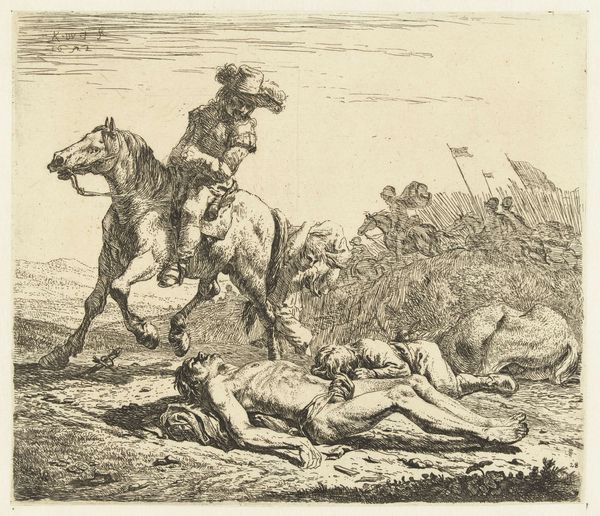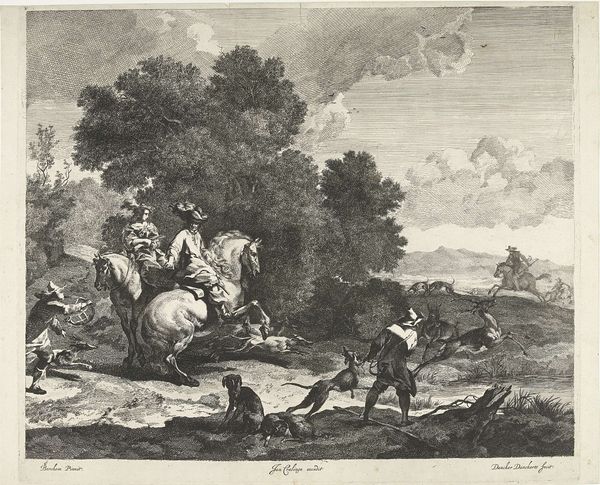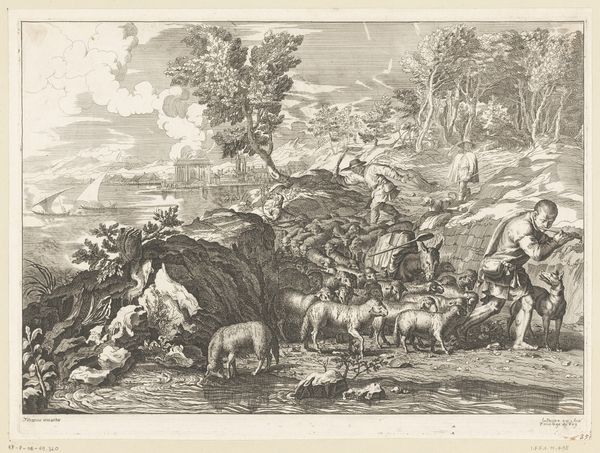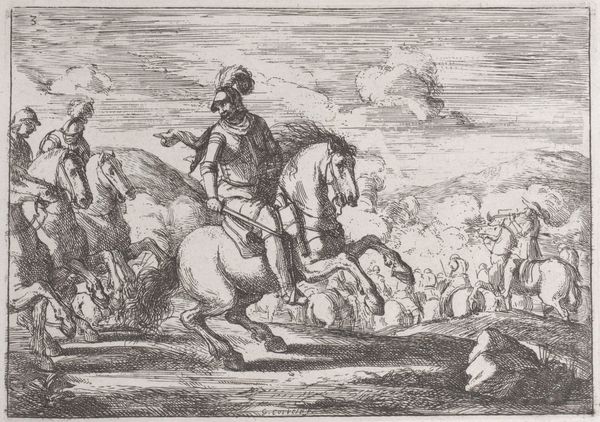
drawing, engraving
#
drawing
#
baroque
#
pen sketch
#
pencil sketch
#
dog
#
landscape
#
line
#
genre-painting
#
engraving
Dimensions: height 152 mm, width 179 mm
Copyright: Rijks Museum: Open Domain
Abraham Hondius created this etching, "Wolf aangevallen door honden," in the Dutch Republic during the second half of the 17th century. It depicts a wolf being attacked by dogs, while two men with spears are on the horizon. Imagery of animals was a well-established visual trope in Dutch painting and printmaking and was usually associated with country life. But within a republic, the motif of the hunt took on new meanings, where the hunter could represent the bourgeois or aristocratic man who was in control. The wolf, a common symbol of wilderness and the untamed, was seen as a threat to social order and needed to be controlled. We can interpret this etching as a symbolic representation of social order and the relationship between humans and nature within Dutch culture. Hondius likely drew on popular imagery, such as emblems and proverbs, to convey these meanings. To fully understand this image, we would need to research the cultural and social context in which it was produced, by looking into the history of hunting, the symbolism of animals, and the social hierarchies of the time.
Comments
No comments
Be the first to comment and join the conversation on the ultimate creative platform.
